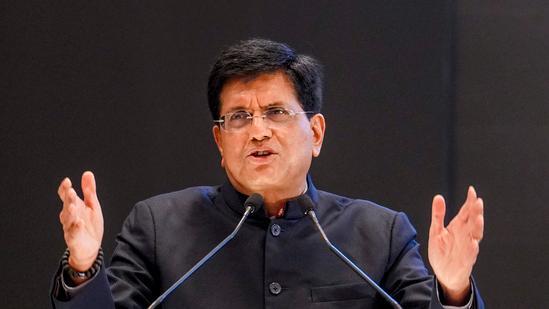
Confident that India’s gain is in it: Piyush Goyal on US tariffs
The recent announcement of the 26% tariffs on India by the United States has sent shockwaves across the globe. The move has been met with a mix of reactions, with some industries expressing concern and others seeing opportunities in the new development. In the midst of the controversy, Union Minister Piyush Goyal has emerged as a strong advocate for the benefits of these tariffs, stating that “India’s gain is in it.”
Goyal’s optimism is rooted in his assessment that every sector has a different perspective on the tariffs, and that industries in India are identifying opportunities in the current situation. As the Commerce Minister, Goyal has been in constant communication with various sectors, including the ones that are directly affected by the tariffs. His interactions have given him a deeper understanding of the complexities involved and have allowed him to spot the silver lining in the situation.
So, what exactly are these opportunities that Goyal is referring to? To understand this, it’s essential to delve into the specifics of the tariffs and their impact on various sectors. The 26% tariffs imposed by the US are part of a broader retaliatory move aimed at India’s tariffs on certain American goods. The tariffs, which came into effect on June 24, apply to a range of products, including steel, aluminum, and agricultural products.
One of the sectors that is expected to benefit from these tariffs is the Indian steel industry. The US has imposed a 25% tariff on Indian steel, which is expected to boost domestic demand and encourage Indian steel producers to increase their production. This, in turn, could lead to an increase in employment opportunities and a boost to the overall economy.
Another sector that is likely to benefit is the Indian agricultural sector. The US has imposed a 25% tariff on Indian rice, among other agricultural products. This could provide an opportunity for Indian farmers to increase their exports to other countries and reduce their dependence on the US market. Additionally, the tariffs could also promote domestic processing and value addition in the agricultural sector, leading to increased economic activity and employment opportunities.
Goyal’s confidence in India’s ability to benefit from the tariffs is also rooted in the country’s growing economic prowess. India’s economy has been growing at a steady pace, and its industries have been diversifying and expanding into new markets. The country’s growing middle class and increasing consumer spending power are also creating new opportunities for businesses and entrepreneurs.
Moreover, Goyal’s optimism is also fueled by the country’s strong policy framework, which is designed to promote economic growth and development. The government has implemented several initiatives aimed at promoting ease of doing business, improving infrastructure, and encouraging foreign investment. These initiatives, combined with the country’s demographic dividend, have created a strong foundation for India’s economy to grow and thrive.
However, not everyone is convinced that Goyal’s optimism is justified. Many industries, including the pharmaceutical and IT sectors, have expressed concern about the impact of the tariffs on their businesses. These sectors have significant exports to the US and are worried about the potential loss of market share and revenue.
The pharmaceutical sector, in particular, is concerned about the impact of the tariffs on its exports of generic medicines to the US. The sector is one of the largest contributors to India’s pharmaceutical exports, and any disruption to its exports could have significant economic implications.
Similarly, the IT sector is concerned about the impact of the tariffs on its exports of software and IT services to the US. The sector is a significant contributor to India’s GDP and has been growing rapidly in recent years. Any disruption to its exports could lead to job losses and a slowdown in economic growth.
In conclusion, while Goyal’s optimism about the benefits of the US tariffs may be disputed by some, it is clear that the situation presents opportunities for certain sectors and industries. The Indian steel and agricultural sectors, for instance, are likely to benefit from the tariffs, while the country’s growing economy and strong policy framework provide a solid foundation for its industries to thrive.
As the situation unfolds, it will be essential for the government and industry leaders to work together to identify and capitalize on the opportunities presented by the tariffs. This will require a combination of strategic planning, investment in infrastructure and human capital, and a willingness to adapt to the changing business environment.
Ultimately, Goyal’s confidence in India’s ability to benefit from the tariffs is rooted in his understanding of the country’s strengths and its ability to navigate complex global economic situations. As the situation continues to evolve, it will be interesting to see how India’s industries and economy respond to the challenges and opportunities presented by the US tariffs.






